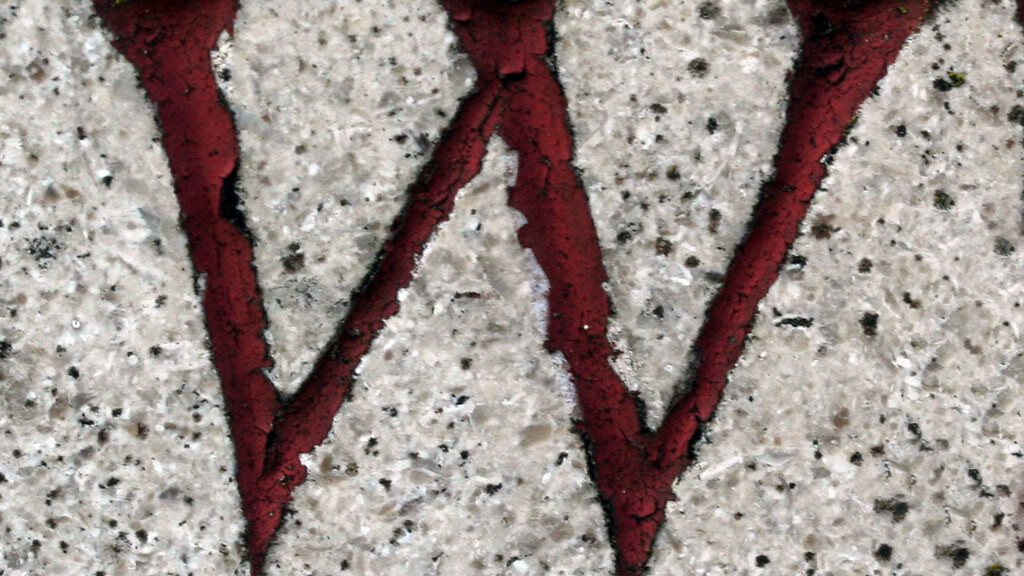‘We do have a limitless reservoir of ignorance, but we also have conceptual confusions that new knowledge seldom helps relieve.’
Ian Hacking
‘We do have a limitless reservoir of ignorance, but we also have conceptual confusions that new knowledge seldom helps relieve.’
Ian Hacking
Conceptualizing social life through topological folding, braid operators and collapse functions
Abstract. Social intensiology is outlined here in its connection to morphogenesis. the latter aims to explain how form come into existence, just as the former seeks to tackle the intensive states of social life. A topological reference model is proposed for conceptualizing how social life operates immanently with saliences and pregnances. The paper starts from the famous Collatz conjecture, and reviews how it has been recently modelled by Danail Valov using braid groups and including thermodynamic irreversibility into the picture. A ‘Valov braid’ can be understood as a manifold, an entity that is, at the same time, individual and collective. Its collective structure can be reconstructed, through its operational logic, as a tensional field. An attempt is made to show how phenomena of memory and measure are intertwined with the braid’s developments, giving rise to a rich present, multi-faceted that lives in non-coincidence. Within such framework, rhythmanalysis is presented as a useful tool for assaying and experimentally improving social life.
Keywords: social theory; social modelling; topology; braid groups; rhythmanalysis
>>> draft available upon request

NOW OUT in Biosemiotics
https://link.springer.com/epdf/10.1007/s12304-025-09613-1
Abstract. The paper advances a proposal for binding together the insights of biosemiotics and those of semiophysics. The task of achieving an intelligible ontology, in opposition to both mechanical reductionism and metaphysical vitalism, is shared by these two approaches. Yet, there are architectural differences between the two theories. The paper reviews such a differendum, focusing in particular on the difference between Thom’s two-fold construction of saliences and pregnances, and Peircean three-fold categorial construction encompassing firstness, secondness and thirdness. An integrated semiophysical-biosemiotic graph thus encompasses five key categories. This paper suggests to arrange them as a “W” shape to chart their possible dynamical interactions.
Keywords: semiophysics; biosemiotics; theory of meaning; salience/pregnance; firstness/secondness/thirdness
 Out now in Cosmos and History: The Journal of Natural and Social Philosophy
Out now in Cosmos and History: The Journal of Natural and Social Philosophy
Abstract. The notion of elemental reality is parsed here as instrumental to a renewal of the understanding of social formations, orders, processes, events, and, more generally, social life. An attempt is made to revisit the element notion drawing insights from the classical imagination, so as to develop an ‘elementalism’ that does not imply a simple return to atomism, but rather retrieves some important insights from the Aristotelian tradition. Elementalism, it is suggested, enables us to see the limitations of both individualist and collectivist takes on social life, allowing for a more ‘environmentalist’ idea of what constitutes society. In an attempt to analyze how an elemental reality can be said to be at play, the category of ‘the visible’ is considered, so as to evince some of its constitutive dimensions, properties, and moments.
Keywords: social theory; medium theory; social environment; elemental reality; the visible
Link to OA article : https://cosmosandhistory.org/index.php/journal/article/view/1168
Also here
Now out in Etnografia e Ricerca Qualitativa
A reading of Ruben Östlund’s Triangle of Sadness through Fascist and Aberrant Leadership
Abstract. In this piece, we puzzle about the social logic of leadership through the lens of the movie Triangle of Sadness (2022), directed by the Swedish filmmaker Ruben Östlund. We flesh out a distinction between two modes of leadership, which we call, respectively, fascist and aberrant, and elaborate on how these are seen at work in the film. Phenomena of leadership, we suggest, illustrate the workings of social logic ex vivo, and offer exquisite examples of how intensities intervene in social interaction, giving rise to the tensive states in which the local protagonists of interaction are caught.
Keywords: social theory, social interaction, social logic, social intensities, leadership
–> Contact me if interested in reading the draft!
We notice that, in a relationship between two people, the external form is rarely an adequate expression of its inner intensity. This inadequacy results from the fact that the inner relations develop continuously, while the external relations develop in a spasmodic fashion.
Georg Simmel, 1900
“On ne peut avoir la vérité sans les risques. Il n’y a plus de philosophie si l’on regarde d’abord aux conclusions; le philosophe ne cherche pas les raccourcis, il fait toute la route.”
Maurice Merleau-Ponty
… il n’en est pas moins vrai que les choses se passent comme si tout organisme supérieur était né d’une association de cellules qui se seraient partagé entre elles le travail. Très probablement, ce ne sont pas les cellules qui ont fait l’individu par voie d’association ; c’est plutôt l’individu qui a fait les cellules par voies de dissociation. Mais ceci même nous révèle, dans la genèse de l’individu, une hantise de la forme sociale, comme s’il ne pouvait se développer qu’à la condition de scinder sa substance en éléments ayant eux-mêmes une apparence d’individualité et unis entre eux par une apparence de sociabilité. Nombreux sont les cas où la nature paraît hésiter entre les deux formes, et se demander si elle constituera une société ou un individu : il suffit alors de la plus légère impulsion pour faire pencher la balance d’un côté ou de l’autre … dans des organismes rudimentaires faits d’une cellule unique, nous constatons déjà que l’individualité apparente du tout est le composé d’un nombre non défini d’individualités virtuelles, virtuellement associées. Mais, de bas en haut de la série des vivants, la même loi se manifeste. Et c’est ce que nous exprimons en disant qu’unité et multiplicité sont des catégories de la matière inerte, que l’élan vital n’est ni unité ni multiplicité pures, et que si la matière à laquelle il se communique le met en demeure d’opter pour l’une des deux, son option ne sera jamais définitive : il sautera indéfiniment de l’une à l’autre. L’évolution de la vie dans la double direction de l’individualité et de l’association n’a donc rien d’accidentel. Elle tient à l’essence même de la vie.
Henri Bergson 1907 (§III, 4)
April 20-22, 2022 – online
+ info | https://hiw.kuleuven.be/hua/events/conferences-workshops/mimetic-turn/index.html
my talk | : https://www.youtube.com/watch?v=0dXJ_Lj9Umg
Happy to join Nidesh Lawtoo’s Mimetic Turn upcoming conference. Especially looking forward to hearing from the distinguished keynotes. On my turn, I’ll be contributing some reflections about
Imitation, metamorphosis, becoming: A comparative social-theoretical sketch
Abstract. In my talk, I would like to address the relation between three notions that share significant similarities, but also exhibit crucial differences: these are Gabriel Tarde’s imitation, Elias Canetti’s transformation (Verwandlung), and Gilles Deleuze’s becoming (devenir). Tarde, whose work spanned the 1890s, is famously associated with the idea that social life is essentially imitative in nature, and although imitation does not truly exhaust his whole conception, it is amply elaborated and variously illustrated throughout his work. Both Canetti, writing in the 1950s, and Deleuze, through the 1960s and 1970s, seem to have subsequently deployed mimetic-like notions in their respective research; at the same time, both have been careful to remark how their conceptions remained distinct from the notion of imitative behaviour. My aim here is thus to compare and analyse these three notions, so as to untangle a little bit their complex, dense relations.
+info | https://hiw.kuleuven.be/hua/events/conferences-workshops/mimetic-turn
Friday February 26, 2021, h.9-11
A seminar given in the series “Chronotopes of the Face”
Full Programme here: Cronotopi_del_volto_FACETS_UNiTO

Now out in Territory, Politics, Governance
At https://www.tandfonline.com/doi/full/10.1080/21622671.2021.1872040
Écrire, c’est d’abord vouloir détruire le temple, avant de l’édifier.
On social formation and territorial production
NOW published in Social Science Information – http://journals.sagepub.com/doi/full/10.1177/0539018418763560
Abstract. This piece explores the issues of morphogenesis and metamorphosis in socio-spatial formations and social assemblages. The specific key provided here to apprehend the issue of ‘form’ is what we propose to call the ‘animistic moment’ in form-taking processes. We believe that a conceptualisation of animistic moments might help us to better understand, not simply the coming about, but the specific yet elusive power forms are endowed with. The general social-theoretical horizon for the essay is an approach to social collectives as forms of territorialisation and territorial stabilisation. An inquiry into the genesis and the transformation of forms through animistic moments, we suggest, might also be employed in the study of processes of social territorialisation at large.
Keywords: social theory; genesis of forms; formative processes; individuals and social aggregates; socio-spatial formations; animistic moments;
Outline
Introduction 1. The mystery of appearances 2. Metamorphosis and investments into form 3. Form-taking and the environment 4. The formation of individual collectives 5. Animistic moments and the revelations of form 6. Territorial production through animation Conclusions